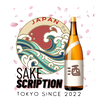When it comes to the world of sake, one cannot underestimate the crucial role that rice plays in shaping its flavor and quality. Among the various rice varieties used in sake production, Yamada Nishiki stands out as the undisputed "King of Sake Rice."
**Distinctive Features of Yamada Nishiki**

One of the key features of Yamada Nishiki lies in its unique starchy core, known as "shinpaku." This enlarged shinpaku is a hallmark of this rice variety and contributes significantly to its sake-brewing potential. Moreover, Yamada Nishiki possesses a low protein content on its surface layer, making it an ideal candidate for producing high-quality sake. This characteristic is highly prized by sake brewers as it facilitates the creation of the desired flavor profile.
Additionally, Yamada Nishiki is distinguished by its soft rice grains. This quality allows it to efficiently absorb the moisture necessary for the activity of koji mold, a crucial component in sake fermentation. As a result, it enables the production of sake with a rich and clean flavor and aroma, making it a favorite choice among brewers.
**Cultivation Challenges**

Despite its numerous advantages, it's important to note that Yamada Nishiki comes with its share of challenges. It is known for being prone to lodging, a phenomenon where the rice plants fall over due to their weight, and it also has relatively low disease resistance. These characteristics make cultivating Yamada Nishiki a challenging endeavor. Additionally, this rice variety is late-maturing, with harvest and shipment typically occurring around November.
In conclusion, Yamada Nishiki's unique qualities and contributions to the world of sake cannot be overstated. It has rightfully earned its reputation as the "King of Sake Rice," and its use continues to be celebrated by sake enthusiasts and brewers worldwide.
